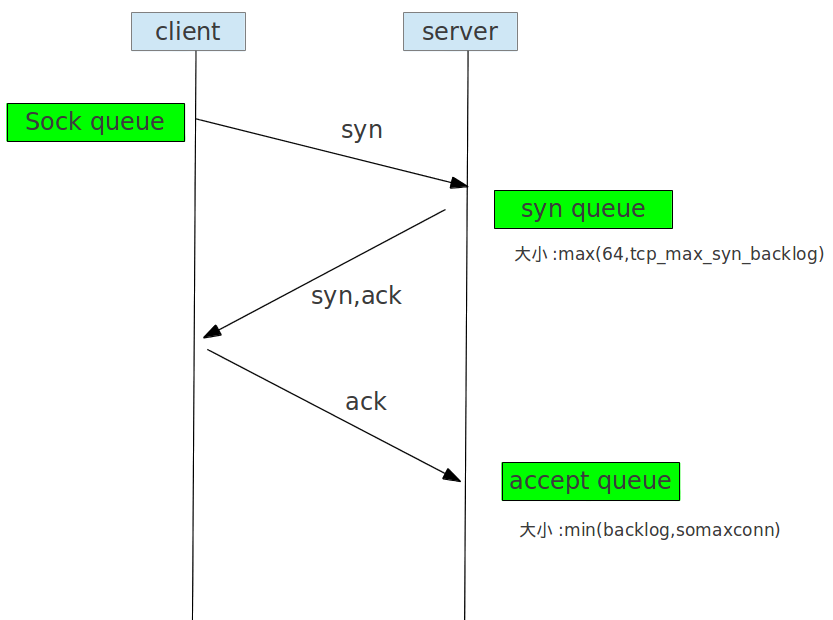在redis2.8版本中有一个tcp-backlog配置, 说明如下:
# TCP listen() backlog.
#
# In high requests-per-second environments you need an high backlog in order
# to avoid slow clients connections issues. Note that the Linux kernel
# will silently truncate it to the value of /proc/sys/net/core/somaxconn so
# make sure to raise both the value of somaxconn and tcp_max_syn_backlog
# in order to get the desired effect.
tcp-backlog 100
然后运行ss命令显示:
State Recv-Q Send-Q Local Address:Port Peer Address:Port LISTEN 0 100 *:6379 *:*
我们看到Send-Q的值为100, 即是我们配置的tcp-backlog值. 为了搞清楚这个值的意思, 了解了下tcp的三次握手进行中的一些queue的知识. 参考下图我们可以看到在server接收到sny的时候会进入到一个syn queue队列, 当server端最终收到ack时转换到accept queue队列. 上面终端显示在listen状态下的连接, 其Send-Q就是这个accept queue队列的最大值. 只有server端执行了accept后才会从这个队列中移除这个连接. 这个值的大小是受somaxconn影响的, 因为是取的它们两者的最小值, 所以如果要调大的话必需修改内核的somaxconn值.

参考: http://jaseywang.me/2014/07/20/tcp-queue-%E7%9A%84%E4%B8%80%E4%BA%9B%E9%97%AE%E9%A2%98/